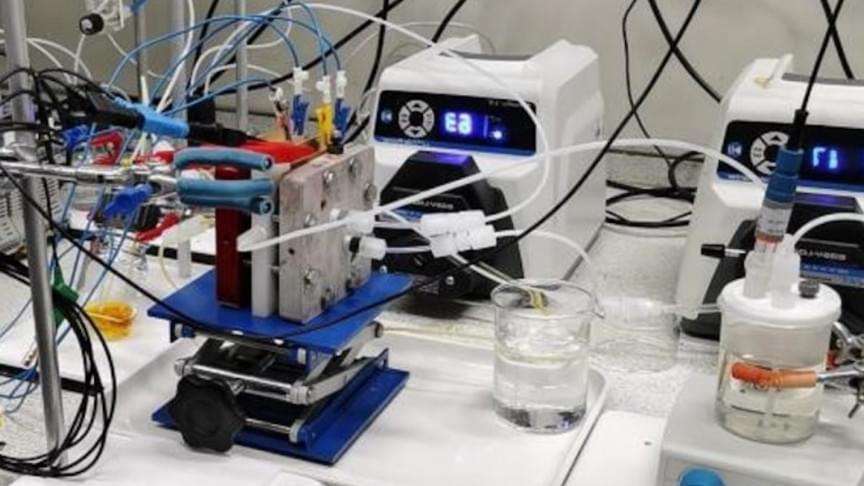Archive for the ‘energy’ category: Page 154
May 3, 2022
California is on the threshold of using 100 percent renewable power
Posted by Gemechu Taye in categories: energy, sustainability
May 3, 2022
How the James Webb Space Telescope beat all expectations
Posted by Alberto Lao in categories: energy, space

Yet on April 28, 2022, each instrument’s alignment was completed, with a ~20 year lifetime expected. Both telescope and team performed dazzlingly, surpassing expectations overall.
First: the pristine, on-course launch conserved fuel purposed for course-correction.
Continue reading “How the James Webb Space Telescope beat all expectations” »
May 1, 2022
Why a bipartisan embrace of crypto might never touch Bitcoin
Posted by Gemechu Taye in categories: bitcoin, cryptocurrencies, energy
Crypto’s biggest skeptics see plenty of reasons to criticize the industry, but generally at the heart of most complaints is a belief that crypto is contributing very little to society while burning massive amounts of energy.
While crypto’s believers could squabble over the former point until they’re blue in the face, the latter is a little harder to deny. Bitcoin uses an estimated 204.50 terawatt-hours (TWh) of electricity per year at current rates according to the oft-cited tracker built by Digiconomist, this number is equal to the power consumption of Thailand. Meanwhile Ethereum’s energy footprint is half the size but still comparable to the power consumption of Kazakhstan. In 2018 the United States reported its total consumption of electricity as 4,222.5 TWh.
For some legislators, those numbers are hard to swallow. This week, the New York State Assembly passed a bill that had team crypto up in arms. The bill blocks the formation of crypto mining firms in the state that rely on non-renewable power. It notably doesn’t apply to existing facilities. A corresponding bill is currently making its way through the Democrat-controlled state senate. everyone, and welcome back to Chain Reaction.
Apr 30, 2022
Jeff Bezos Loses $13 Billion in Hours as Amazon Shares Slump
Posted by Gemechu Taye in category: energy
Amazon slid 14%, pulling Nasdaq 100 to lowest since March 2021.
Jeff Bezos saw $20.5 billion of his fortune melt away after Amazon.com Inc.’s results left investors disappointed, helping fuel the worst month for technology stocks in years.
Shares of the e-commerce company were down 14% on Friday after it reported a quarterly loss and the slowest sales growth since 2001. Bezos’s net worth fell to $148.4 billion, according to the Bloomberg Billionaires Index, from a peak this year of more than $210 billion.
Continue reading “Jeff Bezos Loses $13 Billion in Hours as Amazon Shares Slump” »
Apr 29, 2022
New hydrogen fuel cell uses iron instead of rare and expensive platinum
Posted by Raphael Ramos in category: energy
Apr 29, 2022
A Problem That Could Plague Rapid Transport Like Bullet Trains & Hyperloop
Posted by Shubham Ghosh Roy in categories: energy, mapping, transportation
If you look at Amtrak’s route map, you’ll notice that the service isn’t really geared toward serving rural areas and smaller cities. Sure, they do stop at some smaller cities along existing rail routes, but those aren’t the point as much as a place to get fuel and let people get onto connecting services. On top of that issue, Amtrak largely uses the same tracks as freight trains, and the freight lines have been placed according to freight needs and not the needs of potential passengers. In one particularly weird case, it completely skips the Phoenix metro area, with the nearest station in Maricopa.
But I’m getting off topic a bit with that last one. The main point to gather from the map is that it’s designed mostly to connect larger cities with other large cities. Going from New York to Los Angeles isn’t a big deal. Going from El Paso to Albuquerque, well, even Amtrak tells you on the map that you’re getting on a Greyhound. Public transit really isn’t a priority in the United States, though. So maybe this isn’t a fair comparison. Let’s look at some maps in other countries for a minute:
Apr 29, 2022
NRL Conducts Successful Terrestrial Microwave Power Beaming Demonstration
Posted by Saúl Morales Rodriguéz in categories: energy, military
A microwave dish transmitter is pointed toward a rectifying antenna in part of the Safe and Continuous Power Beaming – Microwave (SCOPE-M) demonstration at Army Blossom Point Research Field, Maryland, Sept. 21, 2021. U.S. Naval Research Laboratory developed the rectifying antenna, “rectenna”, to convert an x-band microwave beam to 1 kilowatts of DC power at a range of 1 kilometer.
Photo Information
Apr 28, 2022
Zero-index metamaterials offer new insights into the foundations of quantum mechanics
Posted by Shubham Ghosh Roy in categories: energy, quantum physics
In physics, as in life, it’s always good to look at things from different perspectives.
Since the beginning of quantum physics, how light moves and interacts with matter around it has mostly been described and understood mathematically through the lens of its energy. In 1900, Max Planck used energy to explain how light is emitted by heated objects, a seminal study in the foundation of quantum mechanics. In 1905, Albert Einstein used energy when he introduced the concept of photon.
But light has another equally important quality, known as momentum. And as it turns out, when you take momentum away, light starts behaving in really interesting ways.
Apr 27, 2022
MIT wants to use a rock-vaporizing drill to cut 12 miles into Earth’s crust
Posted by Shailesh Prasad in category: energy

MIT spinoff Quaise Energy is building a drill that vaporizes rock — so that we can tap into the energy miles below our feet.
Geothermal energy: Earth’s core is as hot as the surface of the sun, but we don’t have to go too far below the surface to start feeling the heat — in the Mponeng gold mine in South Africa, which has a depth of 2.5 miles, rock temperatures can reach 140 degrees Fahrenheit.
Continue reading “MIT wants to use a rock-vaporizing drill to cut 12 miles into Earth’s crust” »















